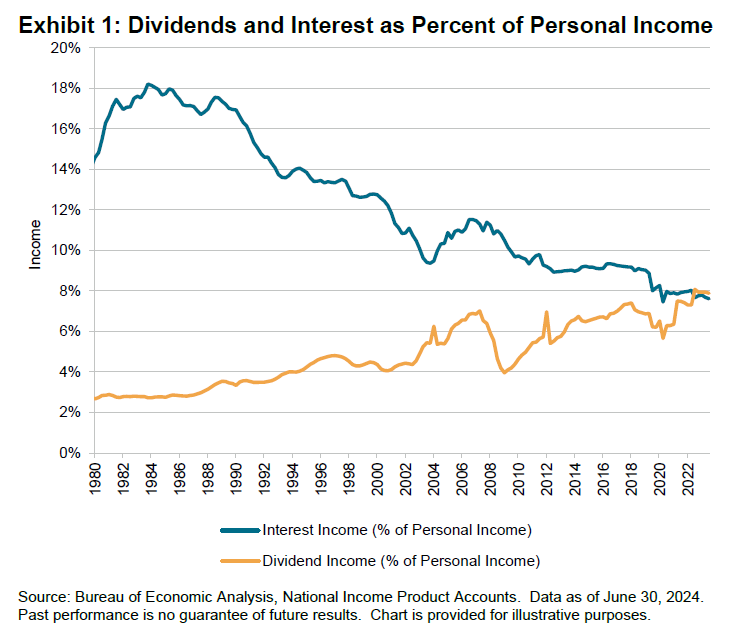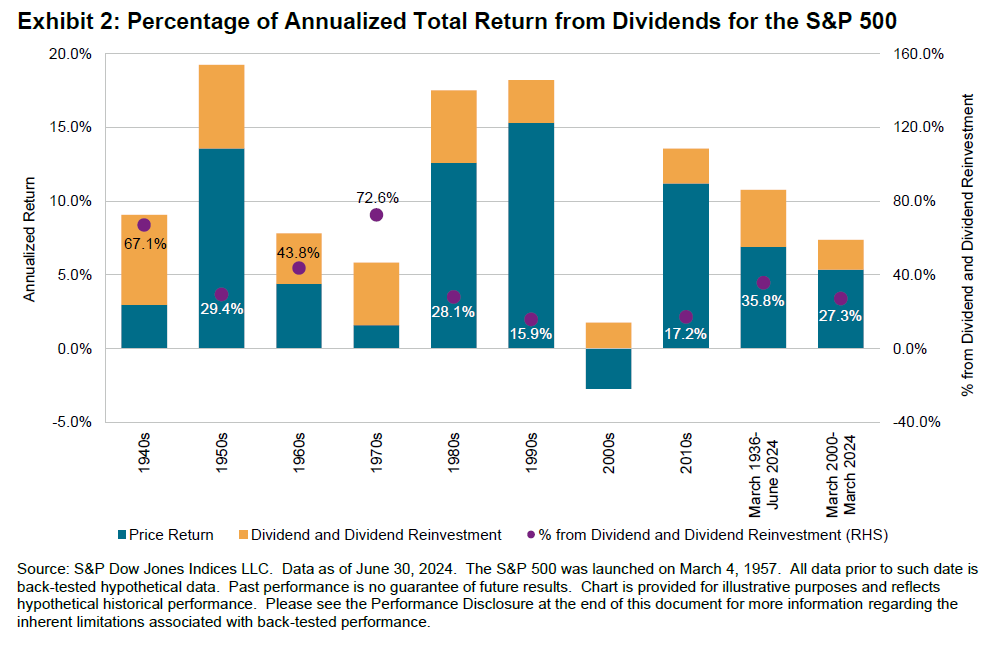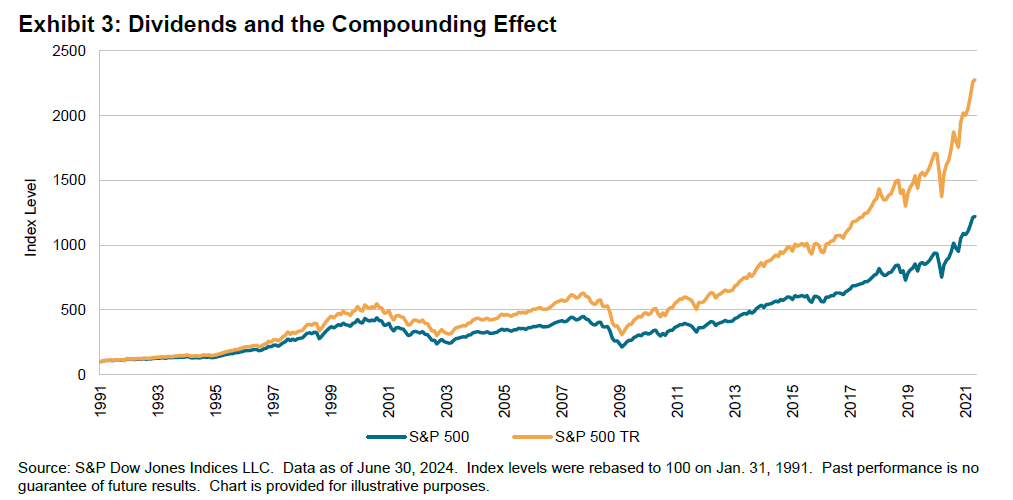Introduction
The Dow Jones Taiwan Technology Dividend 30 Index takes an innovative approach to linking growth potential from technology companies with high dividend yield. It seeks to measure the performance of 30 Information Technology and Communication Services companies with the highest indicated annual dividend (IAD) yield in the Taiwan market, subject to fundamental and dividend sustainability criteria. From April 2013 to June 2024, the index had an average trailing 12-month dividend yield of 5.7% and an annual total return of 15.88%, outperforming the S&P Taiwan BMI by 2.59%.
In most markets, high-dividend-yield stocks are often associated with the Financials sector and defensive sectors such as Utilities, rather than growth sectors such as Information Technology. This implies that searching for yield could mean giving up growth exposure for many market participants. However, Taiwan is a unique exception.
In the 1960s, Taiwan emerged as a hub for integrated circuit (IC) assembly and packaging for foreign companies and later started to accumulate chip engineering and manufacturing know-how domestically. After a half-century of development, it is now home to 314 semiconductor companies, accounting for over 90% of worldwide production of below-7nm semiconductors. Its Information Technology sector, which is predominately represented by semiconductor manufacturers, has evolved to be the core of Taiwan’s economy. As of June 30, 2024, the Information Technology sector makes up 71.45% of the S&P Taiwan BMI.
Cultivated over nearly a half-century, technology companies in Taiwan grew to be mature enough to maintain a profit distribution policy. In the Information Technology sector, 91.5% of companies paid a dividend during the 2023 calendar year with an average payout ratio of 63.7%, and 71.6% of companies had paid a dividend for five consecutive years. In 2023, dividends from the Information Technology sector accounted for 57.8% of total dividends paid in the Taiwan market.
Sign up to receive updates via email
Sign Up
Additionally, surging global demand for semiconductor and related electrical components in recent years has benefited technology stocks in the Taiwan market. In 2023, the Information Technology sector of the S&P Taiwan BMI posted a positive price return of 41.63% in USD terms, outperforming the S&P 500® by 17.4%.
Taiwan’s unique economic development and the characteristics of its market today provide a potential opportunity to track high-dividend-yielding technology companies. Over the 11-year back-tested period, the Dow Jones Taiwan Technology Dividend 30 Index was able to maintain a level of price appreciation comparable to that of its broad market benchmark, while also delivering significant outperformance in terms of total return, showing the index’s historical ability to track high-dividend-yielding companies while maintaining growth exposure.
Dow Jones Taiwan Technology Dividend 30 Index Construction
The starting universe for the Dow Jones Taiwan Technology Dividend 30 Index are stocks from the Information Technology and Communication Services GICS® sectors in the S&P Taiwan BMI that meet size and liquidity criteria, and that have paid dividends for five consecutive years. Then, those eligible stocks must pass two out of three fundamental screenings: positive free cash flow, positive ROE and positive five-year dividend growth. Finally, the 30 constituents with the highest IAD yield are selected.


















































